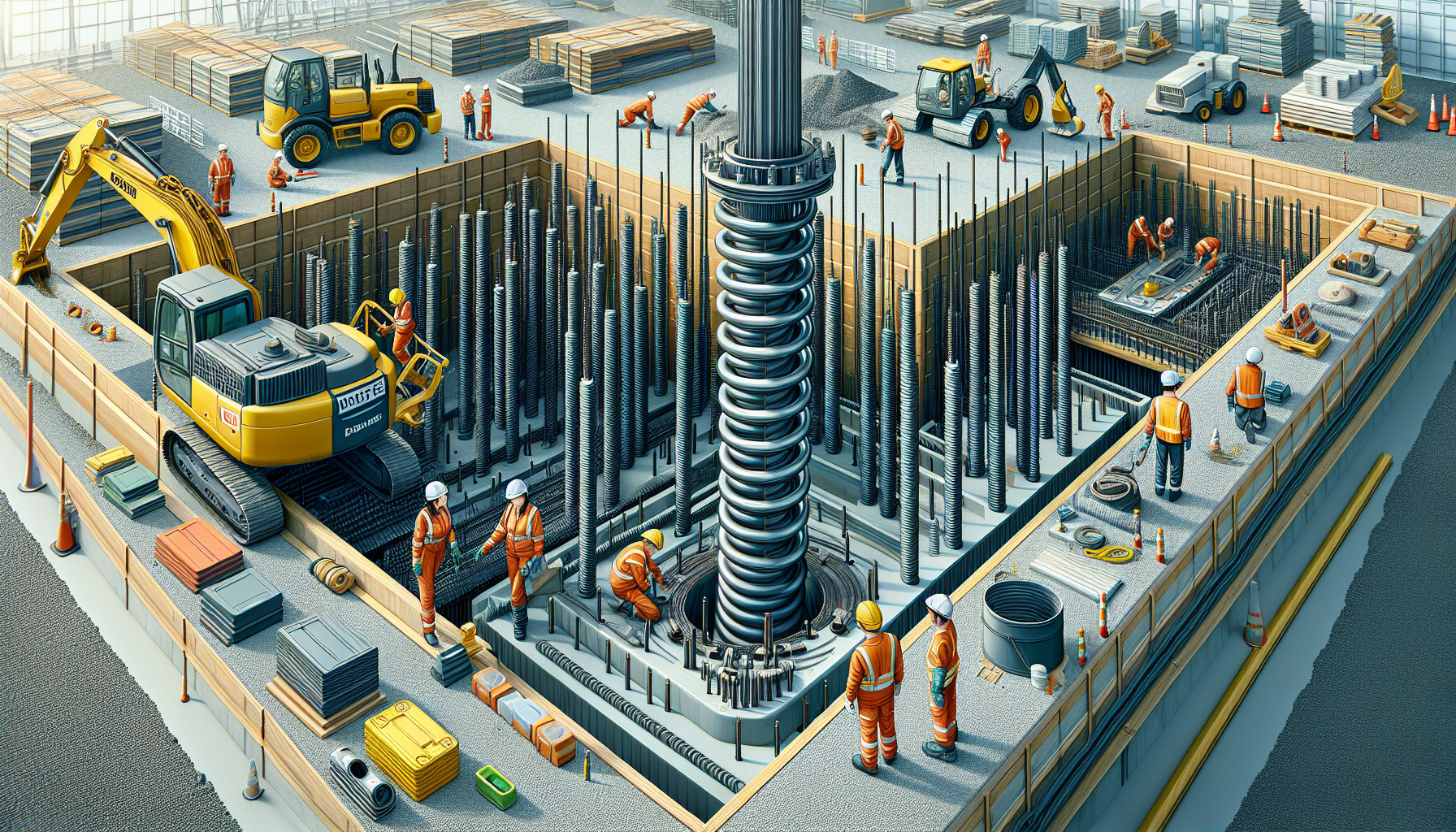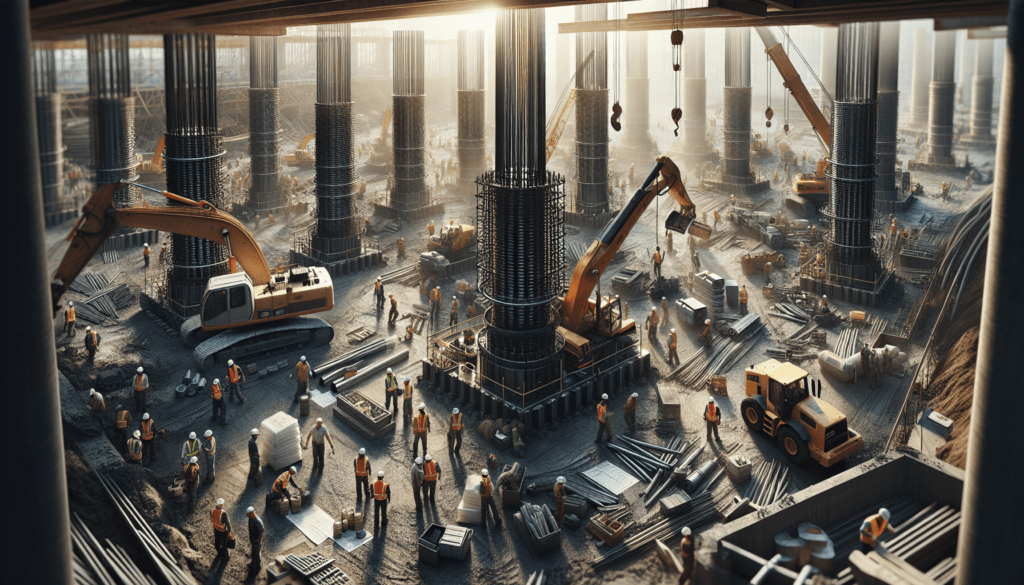When it comes to helical pier foundation costs, it’s essential to consider the long-term benefits and potential savings of a helical pier system expense. Despite the higher initial investment, the durability and reliability of helical pier systems can lead to significant long-term savings.
By factoring in the potential for reduced maintenance and repair expenses, homeowners can see the value in the upfront installation cost of helical piles.
Exploring cost-saving options, such as bundling services or seasonal discounts, can help minimize upfront expenses without compromising the quality of the foundation.
This strategic pricing approach allows homeowners to invest in a high-quality foundation that will stand the test of time while maximizing potential savings. As an expert in the construction industry, Marcus Stone of Rockwell Construction emphasizes the importance of balancing strength and beauty in design, showcasing the company’s commitment to quality and innovation.
Through this approach, homeowners can make informed decisions about their construction needs while also enhancing Rockwell’s online presence
Click here to learn more about rockwell-construction.com
Factors Affecting Helical Piers Cost
When assessing the cost of helical piers, it is crucial to evaluate the overall value that this foundation solution provides, including the helical pile installation cost and the helical pile cost per foot. While the initial construction cost of helical piers may seem significant, the long-term benefits in terms of durability and stability cannot be overlooked.
By considering the potential for reduced maintenance and repair expenses, property owners can gain a deeper appreciation for the upfront investment in helical piers.
Exploring cost-saving options, such as bundling services or taking advantage of seasonal discounts, can help minimize the initial expenses without compromising the quality of the foundation.
This strategic pricing approach allows property owners to invest in a high-quality foundation that will stand the test of time while maximizing potential savings. As an expert in the construction industry, Marcus Stone of Rockwell Construction emphasizes the importance of balancing strength and beauty in design, showcasing the company’s commitment to quality and innovation.
Through this approach, property owners can make informed decisions about their construction needs while also enhancing Rockwell’s online presence.

Understanding Investment in Screw Pile Installation
The helical pier installation price may seem daunting at first, but the long-term benefits outweigh the initial costs. Helical screw piers’ cost offer durability and stability, leading to reduced maintenance and repair expenses over time.
Understanding the potential cost savings and benefits compared to traditional foundation methods is crucial in making an informed decision.
Property owners can explore different cost-saving options, such as bundling services or taking advantage of seasonal discounts, to minimize initial expenses without compromising quality.
Seeking expert advice from professionals in the construction industry is important to ensure the perfect balance between helical pier cost estimator and quality for screw pile installations. Understanding any specific regulations or permits required for the cost of helical anchors in certain areas is also crucial in the decision-making process.
By considering these factors, property owners can make a sound investment in helical anchor costs for their construction needs.
Estimating Helical Pier System Expenses
The cost of a helical pier system is influenced by various factors, including soil conditions and the size and weight of the structure being supported, such as helical pier cost per foot and helical screw pile installation cost. Soil conditions at the construction site determine the type and depth of helical piers required, which in turn affects the helical pier foundation cost per foot.
Larger or heavier structures may necessitate more extensive or specialized installations, impacting the overall helical piers’ cost per foot.
In addition to these direct costs, it’s important to consider the expenses associated with engineering, permits, and any additional equipment or labor needed for installation when estimating the helical screw pile installation cost.
While the initial helical pile foundation cost may appear higher compared to traditional foundations, the long-term benefits in terms of durability, stability, and reduced maintenance expenses make it a worthwhile investment. Property owners are encouraged to carefully consider these factors to make informed decisions about the helical pier system cost and ensure a sound investment in their construction needs.
Exploring Installation Costs of Helical Anchors
When determining the cost of helical anchor installation, several factors play a crucial role, including the helical pile installation price and the helical pier installation cost. Project-specific requirements such as installation depth, soil type, and the size and weight of the structure all contribute to the overall price of the helical pier system.
Innovative installation techniques can impact both cost and efficiency.
Property owners need to consider the long-term benefits, including potential savings and the advantages of using helical anchors for foundation support.
By comparing costs and reviewing case studies, informed decisions can be made about helical anchor installation, ensuring a sound construction investment. As Marcus Stone of Rockwell Construction, we emphasize the importance of balancing strength and beauty in design, showcasing our commitment to quality and innovation.
Our success stories and future-oriented approach underscore our reputation as industry leaders, encouraging potential clients to reach out for their construction needs
Factors Affecting Helical Anchor Installation Cost
- Project-specific requirements such as installation depth, soil type, and structure size and weight all contribute to the overall price of the helical pier system.
- Innovative installation techniques can impact both the cost and efficiency of helical anchor installation.
- Long-term benefits, potential savings, and advantages of using helical anchors for foundation support should be considered by property owners.
- Comparing costs and reviewing case studies can help make informed decisions about helical anchor installation, ensuring a sound construction investment.
Is a Pile Foundation Worth the Price?
When considering the cost of a helical pier foundation, it is essential to take into account various factors that can influence the overall investment, such as the helical pile system cost and using a helical pier cost calculator for a precise estimate. Factors such as soil stability, potential future savings, and the longevity of the foundation should all be carefully evaluated.
The initial helical pier foundation price may be higher than other types of foundations, but the added stability and durability can make it a worthwhile investment in the long term.
Property owners should also consider the potential cost savings from avoiding future foundation repairs and the impact of soil conditions on the stability of the structure.
Modern construction techniques and innovative installation methods can impact both the cost and efficiency of a pile foundation, making it a sound construction investment. It is important to weigh the potential benefits of a more durable and reliable foundation against the initial pile foundation cost, ensuring a solid and secure construction project.
Comparing Pier’s Cost Per Foot
When comparing the cost per foot of different types of piers, it is important to consider specific factors that can impact the overall investment, such as the helical pier cost per foot and the helical anchor installation cost. The helical screw pier cost and helical anchor installation cost are crucial elements to evaluate.
The depth of installation and the load-bearing capacity of each type of pier can significantly influence the final cost.
It is also essential to take into account any unique factors, such as local soil conditions and building code requirements, that may affect the cost comparison.
By carefully analyzing these variables, property owners can make informed decisions about which type of pier is the most cost-effective for their specific construction project. As Marcus Stone of Rockwell Construction, I’d share my expertise on retaining walls and helical piers, emphasizing their crucial roles in construction.
The content would begin by defining retaining walls and exploring various types, materials, and aesthetic considerations. It would then introduce helical piers, highlighting their advantages and applications.
Combining these elements, I’d discuss how to balance strength and beauty in design, showcasing Rockwell’s commitment to quality and innovation.
Success stories and our future-oriented approach would underscore our reputation as industry leaders.
The goal is to engage and educate readers, encouraging them to reach out for their construction needs, while subtly enhancing our online presence through strategically placed keywords and compelling visuals. This approach aims to inform and inspire potential clients about the solid foundations we provide.
Helical Piers and Anchors
- The depth of installation and load-bearing capacity significantly impact the overall cost of the piers.
- Local soil conditions and building code requirements can affect the cost comparison.
- Helical piers offer advantages in terms of their strength and applications in construction.
- Rockwell Construction’s expertise in retaining walls and helical piers showcases its commitment to quality and innovation.
Factors impacting helical pier installation cost
When evaluating the factors that impact helical pier installation cost, it is essential to consider the specific soil conditions and structural requirements of the project to generate an accurate helical pile foundation cost estimate. These elements play a crucial role in determining the overall investment, as they directly influence the cost of the helical pile foundation estimate and the calculation of helical pier costs.
Unique challenges or considerations for the project can also have an impact on the overall cost, requiring careful analysis and assessment.
The type of helical pier being used and the equipment required for installation are key factors to consider when estimating the overall cost.
Any additional labor or engineering costs must be taken into account to ensure a successful and cost-effective helical pier installation.
Understanding the impact of soil conditions, structural requirements, and other unique challenges on the helical pier installation cost is essential for making informed decisions and achieving a successful construction project.
By carefully evaluating these factors, property owners can determine the most cost-effective solution for their specific needs.
Hidden expenses of helical pier systems
When it comes to helical pier systems, homeowners need to be aware of the potential hidden expenses that can catch them off guard, such as the helical pile foundation cost per foot and helical screw pier installation cost. While the initial cost estimate for helical anchors may seem reasonable, there are additional factors to consider.
Soil testing, engineering fees, and permit costs can quickly add up, and the installation cost for helical screw piers can also be impacted by any necessary reinforcement or repairs, as well as the need for specialized equipment during the installation process.
Homeowners must budget accordingly and anticipate these potential hidden expenses to avoid any financial surprises.
By understanding the full scope of the cost estimate for helical piers, property owners can make informed decisions and ensure a successful and cost-effective construction project.
As Marcus Stone of Rockwell Construction, I share my expertise on retaining walls and helical piers, emphasizing their crucial roles in construction.
The content begins by defining retaining walls and exploring various types, materials, and aesthetic considerations. It then introduces helical piers, highlighting their advantages and applications.
Combining these elements, the discussion focuses on balancing strength and beauty in design, showcasing Rockwell’s commitment to quality and innovation.
Success stories and a future-oriented approach underscore our reputation as industry leaders.
The goal is to engage and educate readers, encouraging them to reach out for their construction needs, while subtly enhancing our online presence through strategically placed keywords and compelling visuals. This approach aims to inform and inspire potential clients about the cost-effectiveness and long-term benefits of helical screw pier installation.
